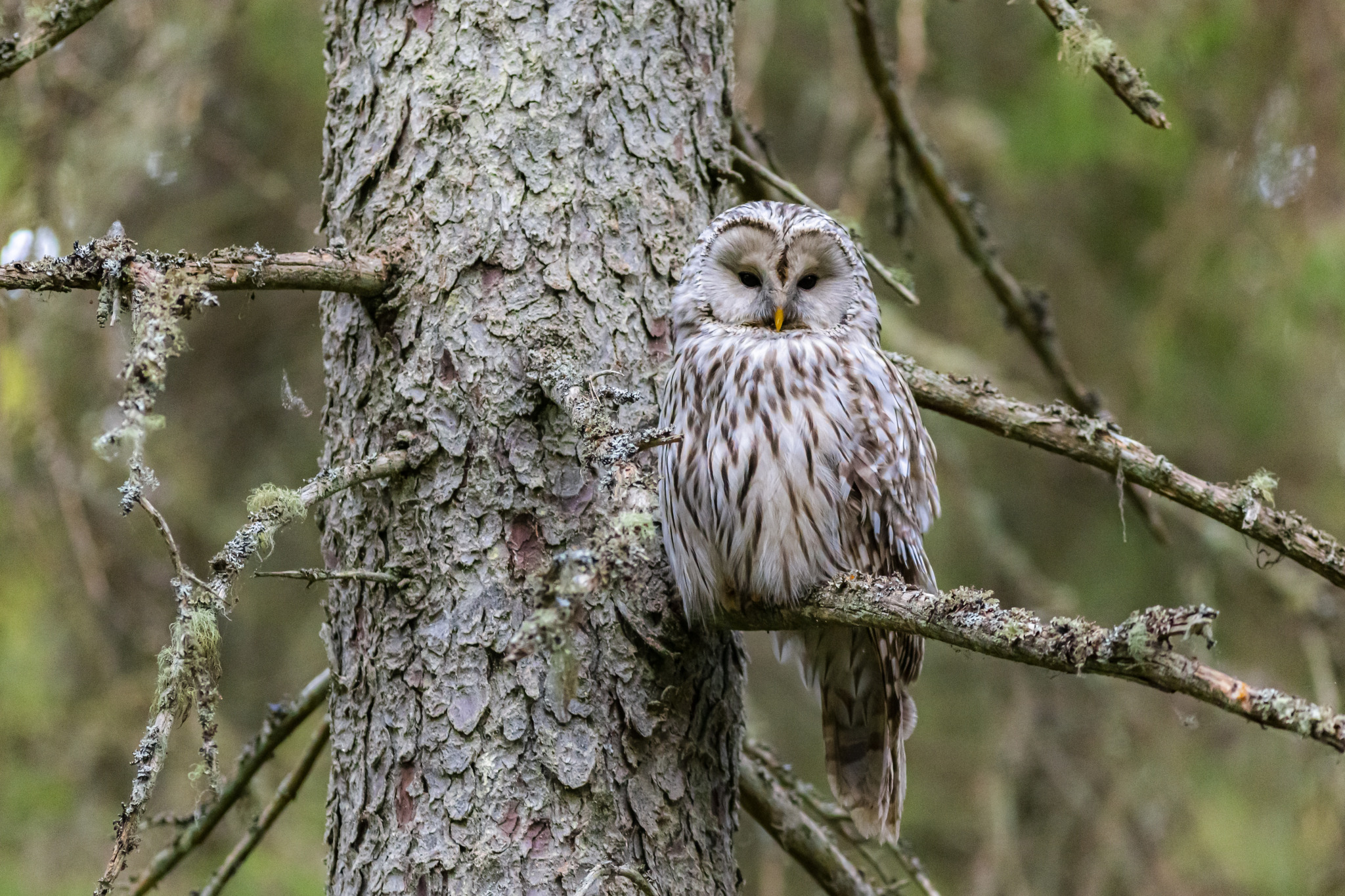Here’s a detailed overview of the Ural Owl (Strix uralensis), one of Europe and Asia’s largest and most impressive owls:
Ural Owl (Strix uralensis)
Taxonomy & Classification
- Kingdom: Animalia
- Phylum: Chordata
- Class: Aves
- Order: Strigiformes
- Family: Strigidae (Typical owls)
- Genus: Strix
- Species: S. uralensis
- Common names: Ural Owl
General Description
- Size: 50–62 cm long; wingspan 110–134 cm.
- Weight: 500–1,300 g (females larger).
- Appearance:
- Pale, rounded facial disc with fine concentric lines and dark eyes.
- Long, wedge-shaped tail (unusual among owls).
- Plumage greyish-brown to whitish with dark streaks, providing camouflage against tree bark.
- Distinctive traits: Lacks ear tufts; the long tail and pale face help distinguish it from Tawny Owl.
Behavior & Lifestyle
- Activity: Primarily nocturnal, but also hunts at dusk, dawn, and even by day in winter.
- Flight: Silent, buoyant, and powerful, adapted to dense forests.
- Territoriality: Extremely aggressive during nesting season—known to attack humans who approach nests.
- Voice:
- Territorial call: a deep series of hoots.
- Other sounds include harsh barks and screams.
Diet
- Main prey: Small mammals—voles, mice, shrews, squirrels.
- Secondary prey: Small to medium birds, frogs, large insects.
- Hunting style: Hunts from perches, swooping silently onto prey, guided by acute vision and hearing.
Breeding & Life Cycle
- Breeding season: March–June.
- Nesting: Uses old tree cavities, broken stumps, large stick nests of other raptors, or artificial nest boxes.
- Clutch size: 2–6 eggs (usually 3–4).
- Incubation: 27–34 days by female, while male provides food.
- Fledging: Chicks leave nest at 4–5 weeks but remain dependent on parents for several more weeks.
Habitat
- Prefers mature mixed and coniferous forests with nearby clearings or wetlands for hunting.
- Often in boreal and montane forests.
- Requires large tracts of undisturbed woodland for successful breeding.
Range
- Found across northern and eastern Europe, Russia, and eastwards through Siberia into northern Japan.
- Populations in central Europe (e.g., Alps, Carpathians, Balkans) are more fragmented.
Ecological Role
- Predator: Controls rodent populations, particularly voles.
- Prey: Occasionally taken by larger raptors such as goshawks or eagles.
- Indicator species: Sensitive to forest management—presence signals healthy, mature forests.
Conservation Status
- IUCN Red List: Least Concern.
- Population trend: Stable, with some increases due to nest box programs.
- Threats:
- Logging of old forests.
- Human disturbance during breeding season.
- Conservation: Legal protections, provision of nest boxes, and preservation of mature woodland.
Interesting Facts
- Among the most aggressive owls toward intruders near nests.
- One of the few large owls that hunts in daylight, especially when feeding chicks.
- In Finland and Sweden, nest box programs have greatly boosted populations.
- Plays an important role in folklore across northern Europe.
Visited 814 times, 3 visit(s) today
Views: 1679
Subscribe to the newsletter:
